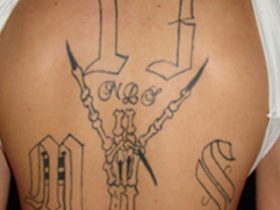People who get SSDI payouts every month don’t always know that this benefit may be looked at from time to time. The Social Security Administration (SSA) does regular checks to make sure that the person still meets the requirements to get help, even though the original approval process includes a thorough medical exam.
This kind of review is called a “Continuing Disability Review.” These things are not a threat or a punishment; they are just how the scheme works. The SSA wants to make sure that payments keep going to people who really need them and to see if there have been any changes in the beneficiary’s health or work that might affect their status.
The fact that you have been approved for SSDI does not mean that you will always get funds. Everything will depend on how your health state changes and how your job situation changes. Because of this, it is important to know how this process works and what might happen at each step.
CDR stands for “Continuing Disability Review.” What is it, and why is it done?
Continuing review is a normal process for Social Security that lets them check to see if a person still meets the physical requirements to get SSDI. When these reviews happen depends on the type of disability and the medical team’s assessment of how much growth was expected at the time of initial approval. They don’t happen every year.
Most of the time, the review happens every three years if the beneficiary’s health is likely to get better over time. If, on the other hand, the SSA thinks the case is not likely to get better, they may wait 5 to 7 years before looking at it again. Time frames aren’t the only thing that goes into decisions; medical reports, new paperwork, and sometimes a personal interview are also used.
A review notice comes in the mail. At that point, the beneficiary must help by giving up-to-date medical information and any other important information about their health or job situation. It is very important to reply by the due dates because failing to do so could mean losing benefits.
What takes place during the review process for SSDI?
As soon as the review starts, the SSA sends out papers and forms that need to be filled out with up-to-date medical information. In some situations, the recipient may also be asked to go to a separate medical appointment that is paid for by Social Security. This meeting is to fairly check if the disability is still keeping the person from doing serious work.
The SSA looks at more than just medical reports. They also check to see if the recipient has worked since the last review. When it comes to SSDI, doing work activities without being told can directly affect the right to keep getting funds. To see if there have been any big changes, the SSA will look at the current situation and compare it to the first one.
The process can take a while, but most of the time it’s over in a few months. The beneficiary will still get standard collection during this time, unless they don’t cooperate or there is clear proof that they no longer meet the requirements.
What happens if the SSA changes its mind and says you no longer meet the requirements?
If the SSA looks into it and decides that the beneficiary no longer meets the physical or work requirements, they will start the process of stopping payment. But the beneficiary can ask for the choice to be changed. It’s important to know that benefits may be kept going briefly until the case is over if the appeal is filed within the legal time limit and a request is made to do so.
In this case, it will be important to get more medical reports, comments from treating doctors, and any other proof that the disability still exists. Before making a final decision, the SSA looks at everything. Many beneficiaries can keep their benefits by showing good medical proof.
But if the beneficiary agrees with the decision or doesn’t file an appeal in time, they will stop getting SSDI funds. They can only apply again if they have a new medical condition or an improvement in their current condition that requires a new evaluation.











Leave a Reply